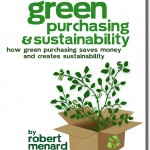The Hypocrisy of Ethanol, Part One

Robert Menard
Certified Purchasing Professional,
Certified Professional Purchasing Consultant, Certified Green Purchasing Professional, Certified Professional Purchasing Manager
Editor’s note: this is Part One of a two part series on ethanol in the US, its political roots and its disastrous environmental damage. Click here for Part Two.
From a political perspective, the Associated Press (AP) is not renowned as a right wing shill. Accordingly, I was surprised by one recent story, “Golden Corn Not So Green” Written by authors Dina Cappiello National Environmentalist Reporter and Matt Apuzzo , two journalist with impressive credentials,the story ultimately incorporates some science, more so the digital version, but begins with politics.
During the winter 2007 Iowa Caucuses, then presidential candidate Obama extoled the virtues of home grown corn and ethanol to the crowd economically married such agriculture. Also in 2007, then President Bush signed a law requiring oil companies to add US produced ethanol to gasoline in percentages as high as 15% in some states. Bush touted that ethanol would make the country “stronger, cleaner, and more secure” when he signed the bill but effectively left it to the next President to make ethanol work. Instead, ethanol has been a failure and a fraud.
Fast forward almost 7 years
The story says that the subsequent ethanol era “has proved to be far more damaging to the environment than politicians promised and much worse than the government admits.” Does the phrase, “If you like your doctor you can keep your doctor, period” come to mind?”
What is worse, taxpayers subsidize the ethanol industry. Whenever the government intrudes into the private markets with subsidies, it creates artificial influences that always have detrimental but not unforeseeable consequences. This blog post entitled “The Food and Fuel Dilemma” published in April of 2012 presages other negative consequences in addition to those reported by the authors.
The AP story states that under the Obama administration “farmers rushed to find new places to plant corn, they wiped out millions of acres of conservation land, destroyed habitat and contaminated water suppliers, according to an AP investigation.” For comparison purposes, the five million acres cited in the story is larger than Yellowstone, Everglades, and Yosemite national parks combined.
Some major environmental damage done by ethanol is carbon dioxide (CO2) released by plowing pristine land, filling in wetlands, and millions of pounds of fertilizer seeping into water supplies. For a list of environmental sins uncovered by the AP study, click on this link.
 The story omits any reference to the fact that ethanol production creates a larger carbon footprint than if it were not used at all. From the perspective of sustainability, the story cites how many so called environmentalists and scientists have banded together to urge rejection of corn-based ethanol as bad environmental policy. Nevertheless, the Obama administration stands by it, highlighting its economic benefits to the farming industry while completely ignoring the consequential environmental damage.
The story omits any reference to the fact that ethanol production creates a larger carbon footprint than if it were not used at all. From the perspective of sustainability, the story cites how many so called environmentalists and scientists have banded together to urge rejection of corn-based ethanol as bad environmental policy. Nevertheless, the Obama administration stands by it, highlighting its economic benefits to the farming industry while completely ignoring the consequential environmental damage.
The story proceeds to take a whack at drilling and fracking for oil and gas, alleging without proof that “environmental damage is well documented and severe.” This unsupported allegation was disappointing. However, this ellipsis may be due more to the authors’ unfamiliarity or confusion over directional drilling and recent advances in hydraulic fracturing technologies rather than bias.
The story cites the Obama administration’s push to reduce greenhouse gasses and curtail global warming while silent on the hot controversy over whether global warming exists at all.
Some of us scientific types remember the story in Time magazine from the early 1970s declaring that the consequence of man’s economic activity and disregard for the planet would lead to a new Ice Age within ten years. This stunning tilt at windmills is now ignored by the current wave of “environmentalists” who continue Chicken Little’s “the sky is falling” hysteria. Worse yet, despite the abundant evidence to the contrary, continue to predict the environmental Apocalypse.
The 1980s came and went without a new Ice Age but political “greenies” remain undaunted. This is a reminiscent of the chronic predictors of the end of the world. It may come, but just not at any known time. Instead of the term “global warming”, a departure from the trend 40 years ago, the new vogue term du jour is the thoroughly undefinable term “climate change” . This group now refers to the “consensus” among a fraction of scientists worldwide of which only 75% believe in global warming.